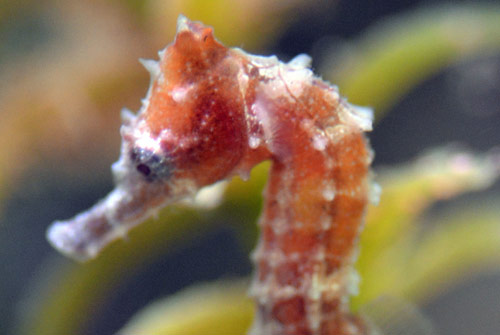Category:
AquaticsAbout
Lined seahorses Hippocampus erectus – Lined seahorses (Hippocampus erectus) are native to Virginia but local populations are in decline as they are throughout their range. Seahorses are very vulnerable to commercial fishery gear caught as by-catch, but they also have long been exploited and sold as dried up souvenirs. Lined seahorses in the Bay are reliant upon structure and particularly submerged aquatic vegetation (SAV) in which they breed, use for cover and hunt for food; as the grass disappears so do the animals that rely upon it. Wild seahorses almost exclusively eat live foods, primarily small invertebrates and crustaceans such as amphipods that live in and on the grasses. Captive seahorses must be acclimated to a variety of prepared (non-live) foods, as their natural diets are difficult to reasonably replicate.
The Virginia Living Museum actively participates in AZA’s Species Survival Plan (SSP) program that coordinates with other AZA-accredited facilities across the country to manage and conserve wild populations of the lined seahorse. Through captive breeding and exchange with other institutions, we can ensure a genetically diverse captive population of seahorses without collecting animals from the wild. The VLM currently houses several successful breeding pairs of lined seahorses that regularly produce healthy offspring. All of our current seahorses were born and bred here at the VLM in early winter of 2013 and early 2014. They have provided us with enough captive bred seahorses not only to display for many years to come, but also with a surplus of animals to send to other SSP facilities around the country.












